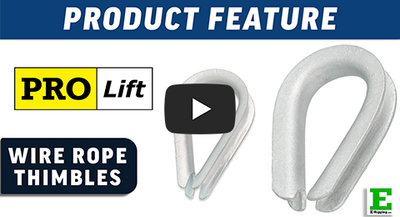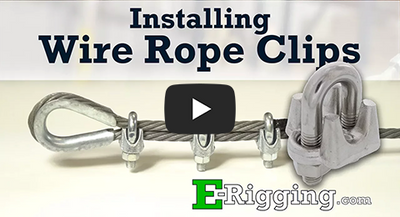Explore our comprehensive range of wire rope thimbles and cable thimbles, designed to meet the demands of various applications and environments. Pair our thimbles with wire rope from our extensive selection of steel cable to create a complete, durable rigging system. Whether you need heavy-duty thimbles for dynamic, high-load applications or light-duty thimbles for cost-effective static loads, we have the right solution to protect wire rope eyes from wear and deformation, ensuring strength and reliability. Choose stainless steel thimbles for superior corrosion resistance in marine or salt-air conditions, or opt for galvanized thimbles and zinc-plated thimbles for industrial and construction needs. Enhance your setup with other rigging essentials like turnbuckles, wire rope clips, and other rigging fittings. Depend on trusted brands like Sinox and Pro Lift for reliability and performance in demanding environments. Shop now to optimize your rigging system with premium wire rope thimbles and accessories available in multiple sizes to suit your needs. Perfect for marine, industrial, and construction applications.
FAQs - Thimbles for Wire Rope and Cable
- Light Duty Thimbles
- Best for static loads and permanent installations.
- Ideal for controlled environments with minimal stress.
- Commonly paired with fiber rope or low-load applications.
- Heavy Duty Thimbles
- Designed for dynamic loads, lifting, towing, and frequent use.
- Extended protective edges to resist deformation under high stress.
- Perfect for industrial rigging, marine use, and construction projects.

- Stainless Steel Thimbles
- Highly resistant to rust and corrosion.
- Ideal for marine environments and saltwater exposure.
- The best choice for pairing with stainless steel cable or chain.
- Hot-Dip Galvanized Thimbles
- Durable and cost-effective for outdoor use.
- Resistant to rust, but some surface corrosion may occur over time.
- Suitable for heavy-duty industrial and construction settings.
- Zinc-Plated Thimbles
- Light-duty option for outdoor environments.
- Affordable, but less corrosion-resistant than galvanized or stainless steel.
- Ideal for applications with occasional exposure to moisture.
For more details on different types of steel thimbles see our Thimbles Video Guide.

- Insert the thimble into the loop of the cable or rope.
- Secure the thimble in place using wire rope clips or ferrules.
- Ensure the thimble is properly sized to prevent rotation or slipping. For a tutorial on a full cable assembly, see our instructional video. How to Open Thimbles How to Open Thimbles
- For small thimbles:
- Use pliers or hands to twist and open.
- For larger thimbles:
- Use a vise and a pipe for precise bending.
Watch our how-to video on steel thimbles for detailed instructions.
The sizing of vinyl-coated cable can be tricky since manufacturers may measure diameters differently. If you’re using stripped vinyl-coated cable, size it the same way you would an uncoated cable. For instance, if your cable is 3/16” but the vinyl coating increases the diameter to 1/4”, you’ll still use a 3/16” thimble for a proper fit.
See our thimbles video guide for more information on choosing the right size thimble for your application.
- Industrial rigging:Ensuring durable connections in heavy lifting and construction equipment.
- Marine environments: Preventing rope damage in saltwater applications like boating and dock setups.
- Construction projects:Reinforcing cable eyes in cranes, hoists, and building installations.
- Recreational setups:Providing safety and durability in zip lines, adventure parks, and other outdoor activities.














